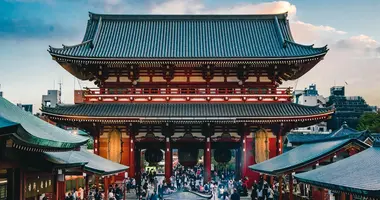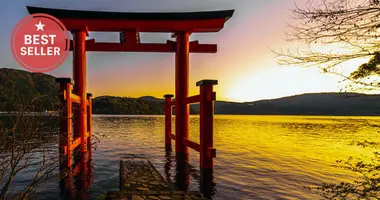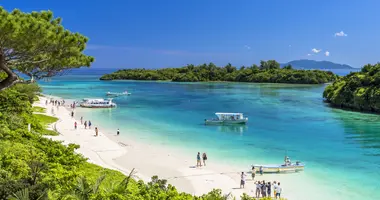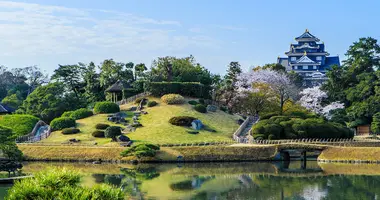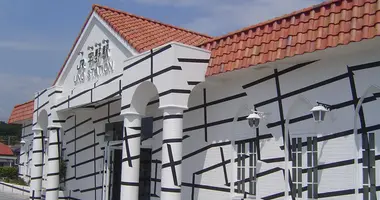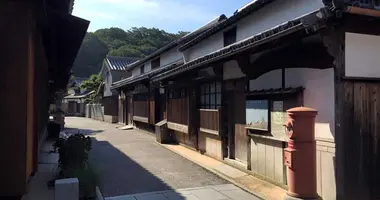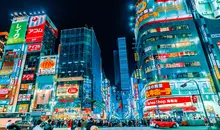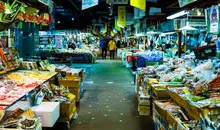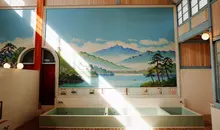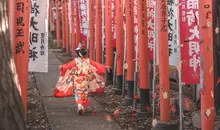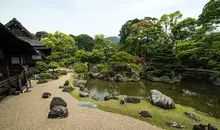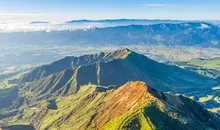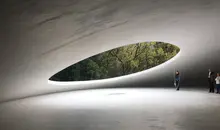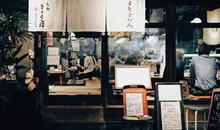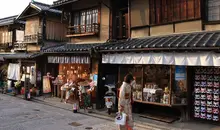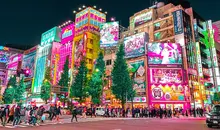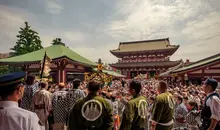Kibi Bike Path
- Published on : 08/12/2014
- by : Japan Experience
- Youtube
Kibi Bike Path in Okayama is a 16 km long, east-west bicycle route through rural Japan from Bizenichinomiya Station to Soja Station and is an easy half day cycle.
Kibi Bike Path, Okayama Prefecture 吉備路サイクリングロード
Jake Davies
The Kibi Plain is a flat wide valley in southern Okayama Prefecture a little west of Okayama city. In ancient times, before the formation of a unified Japanese state, it was home to a powerful kingdom, traces of which still remain.
Kibi is also home to the birthplace of Sesshu, one of the greatest Japanese artists, and the origin of one of Japan's most well known folk tales, Momotaro the Peach Boy. Along with some interesting temples and shrines.
All this in a peaceful rural setting can be enjoyed best by cycling the very popular Kibi Bike Path.
Kibi Bike Path is about 16 kilometers long running roughly east-west from Bizenichinomiya Station to Soja Station. It's an easy half day cycle, but can be expanded to a full day by taking some detours to other sites of interest. For the purpose of this article we start in Soja and head east to Bizenichinomiya.
Even before heading off along the bike path from Soja Station there are a couple of detours worth taking. About 4 kilometers directly south, near Kiyone Station is Karube Shrine. Known as Oppai Shrine, "breast shrine", Karube Shrine is a well known shrine for mothers to pray for a healthy birth and ample milk, and for this purpose hundreds of breast-shaped votive plaques are left.
A local bakery sells breast-shaped breads and cakes. 2 kilometers north of Soja Station is Hofukuji Temple, where the famed Zen monk and artist, Sesshu, studied as an acolyte.
Hofukuji Temple has a nice pagoda and a small garden and here you can learn about the famous legend of Sesshu & the Rat.
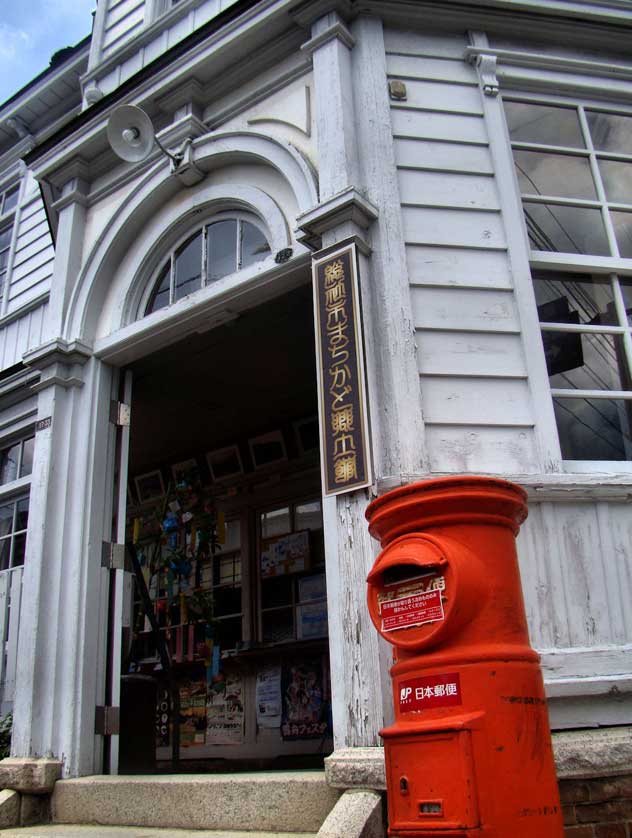 Soja Folklore Museum, Okayama Prefecture, Japan
Soja Folklore Museum, Okayama Prefecture, Japan
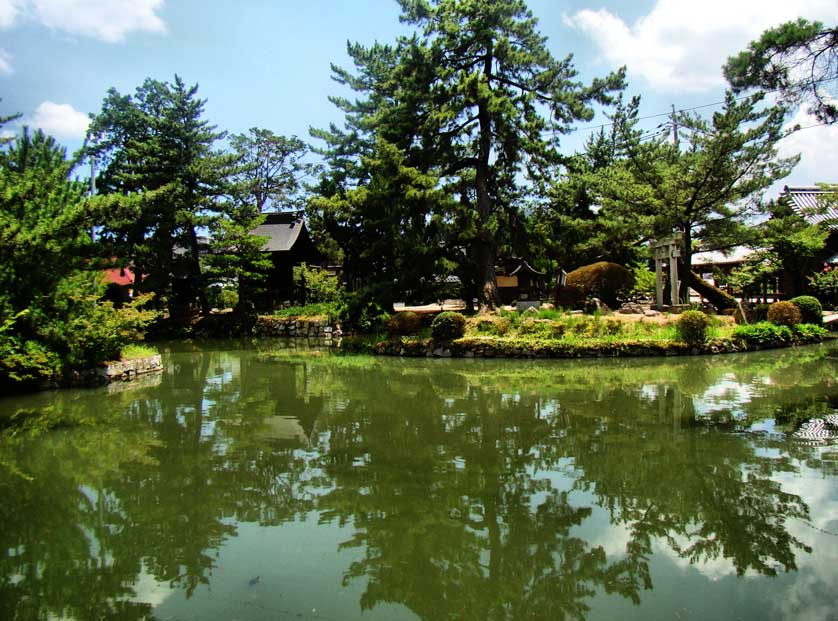 The pond and garden at Soja Shrine, Okayama Prefecture
The pond and garden at Soja Shrine, Okayama Prefecture
Soja Station To Soja Shrine
Starting the bike path from Soja Station you first head to Soja Shrine, and you might think that it was named after the town, but in actual fact the reverse is the case. In early medieval Japan one of the chores for district governors was to visit and make offerings at all the shrines in the district.
Some decided that this was too inconvenient so instead they brought all the shrines into one location, and such a shrine was called Soja. The shrine itself is approached along a covered walkway passing by a large pond garden. In the front of the shrine is a nice collection of kagura masks.
Just next to the entrance to the shrine, in a nice Meiji Period, western-style building that used to be the police station is the Soja Folklore Museum. Entrance is free, and the exhibits are most interesting, focusing on the traditional local "industry," itinerant medicine peddling.
Apparently, though exactly why is not clear, the men of the town traveled the country selling medicines. While that is interesting enough in itself, the main reason to stop in at the museum is to pick up a free copy of a much better map of the bike path route than you will have gotten from the bike rental shop.
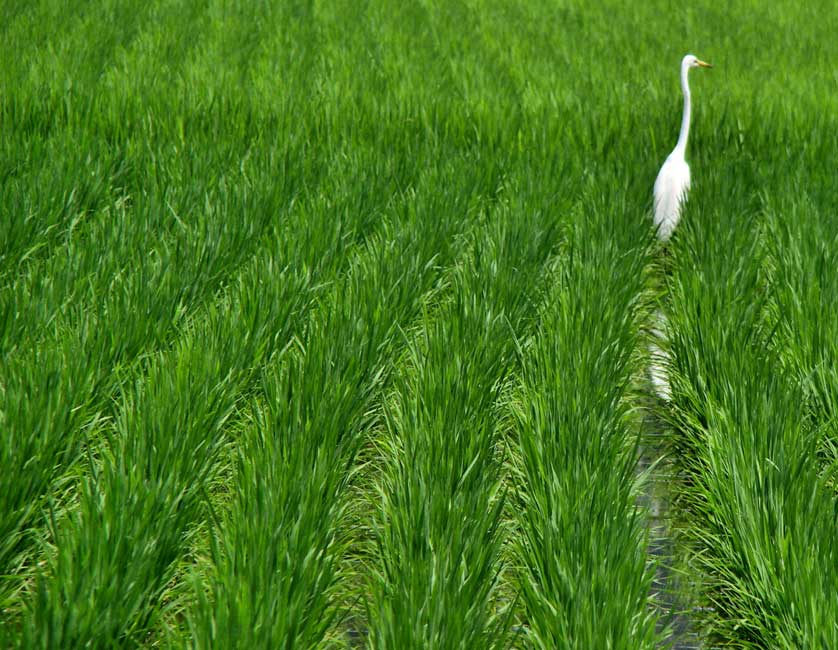 Egret in rice paddy, Kibi Bike Path, Okayama
Egret in rice paddy, Kibi Bike Path, Okayama
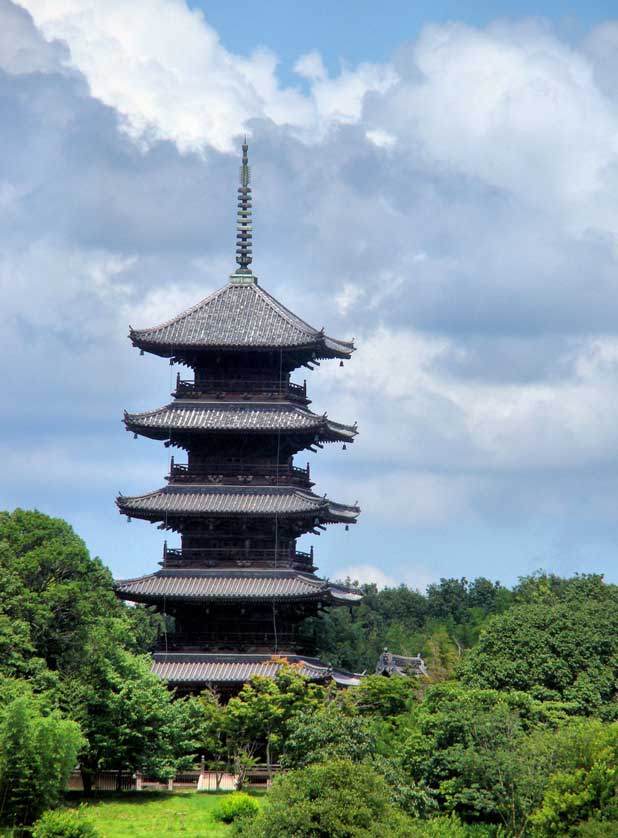 Kokubunji Temple pagoda, Okayama Prefecture
Kokubunji Temple pagoda, Okayama Prefecture
Kokubunji Temple
Once you get out of Soja the traffic disappears and you will find yourself in the open countryside surrounded by rice paddies. After a while a major landmark that you head towards will become visible, the 34 meter tall, 5 storey pagoda of Kokubun-ji Temple.
The original temple was established in 741 by Emperor Shomu who ordered "state-protecting" monasteries established in every province. The Bitchu Kokubunji burned down in the 14th century and lay in ruins until this newer one was constructed nearby in the early 19th century. The pagoda dates from 1821 and is believed to be the last 5 story pagoda built in Japan.
Close to the temple are the group of burial mounds that housed the remains of the ruler of this region in the 4th and 5th centuries. The largest mound, Tsukuriyama, is believed to be the 9th largest burial mound (kofun) in all of Japan. 286 meters (938 feet) long, and 30 meters (98 feet) high, great views over the countryside can be had by climbing on top. The inner chamber is open and you can see the stone sarcophagus.
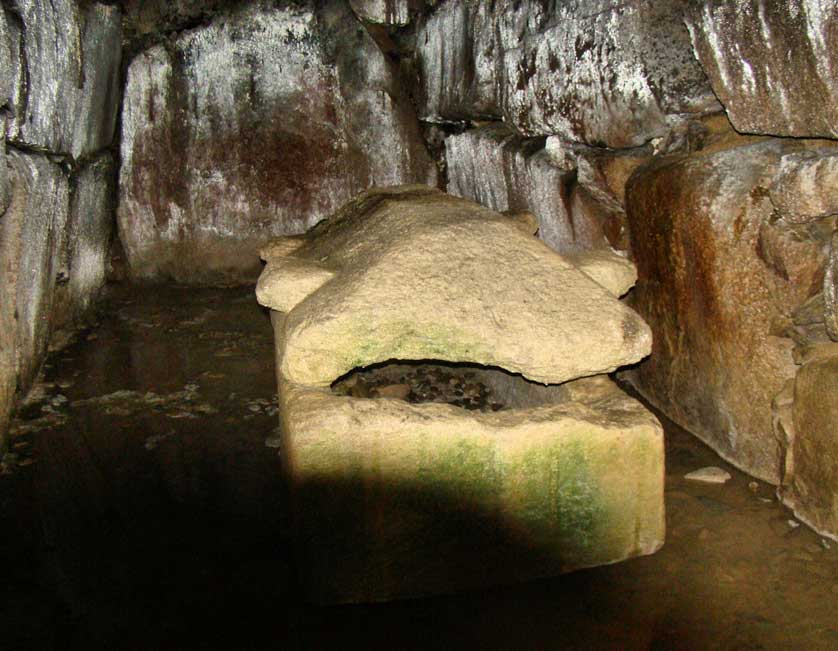 Tsukuriyama burial chamber, Okayama Prefecture
Tsukuriyama burial chamber, Okayama Prefecture
Koikui Shrine to Kibitsuhiko Shrine
Koikui Shrine is a short way off the path itself but is a popular spot for those interested in the Momotaro story. It is just a small, local shrine, but its name means "carp eating" and is the spot where according to the legend Prince Kibitsuhiko caught the demon Ura and killed him.
Getting towards the end of the trail is Kibitsu Shrine, a grand and important shrine that was the highest ranked shrine in the province. Here is the source of the Kibitsuhiko legend that formed the Momotaro story. This is probably the place where you will encounter most tourists.
The final site is Kibitsuhiko Shrine, enshrining the same kami as Kibitsu Shrine, and with the tallest stone lantern in Japan, it is literally a stones throw from the Bizenichinomiya Station and the bike rental drop-off / pick-up point.
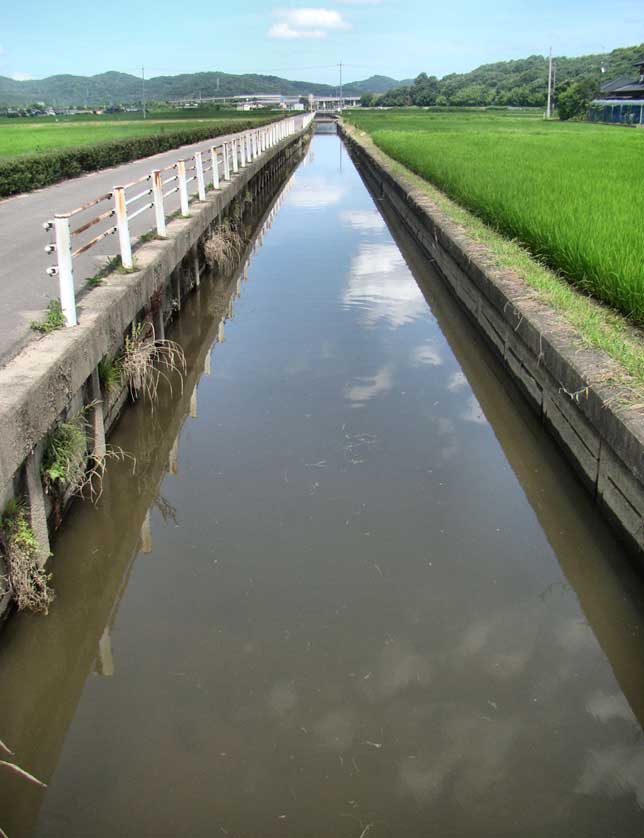 View of the rice fields from Kibi Bike Path, Okayama Prefecture
View of the rice fields from Kibi Bike Path, Okayama Prefecture
Access & Practicalities
Araki is the bike rental shop next to Soja Station, and Uedo is the one at Bizenichinomniya Station.
Bikes rented from one can be dropped off at the other for a 200 yen fee.
The bikes have no gears but the route is almost all flat, so not a real problem. Helmets are not available.
The fees are the same for both establishments, 400 yen for the first two hours and 200 yen per hour thereafter, or 1,000 yen for the day.
Hours are 9 am to 6 pm.
Araki. Tel: 0866 92 0233
Uedo. Tel: 086 284 2311
Kibitsuhiko Shrine is a 3 minute walk from the Bizenichinomiya Station on the JR Kibi Line.
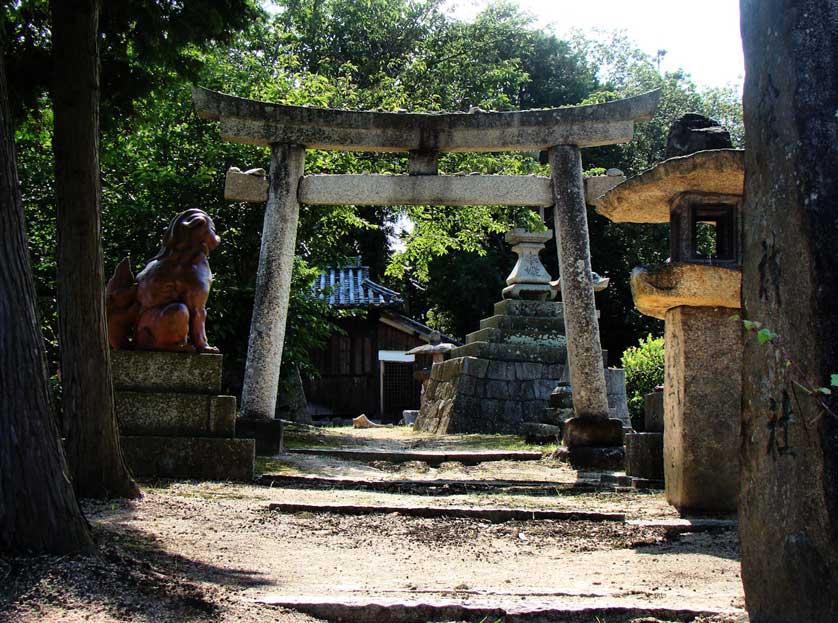 Koikui Shrine, Okayama Prefecture
Koikui Shrine, Okayama Prefecture


